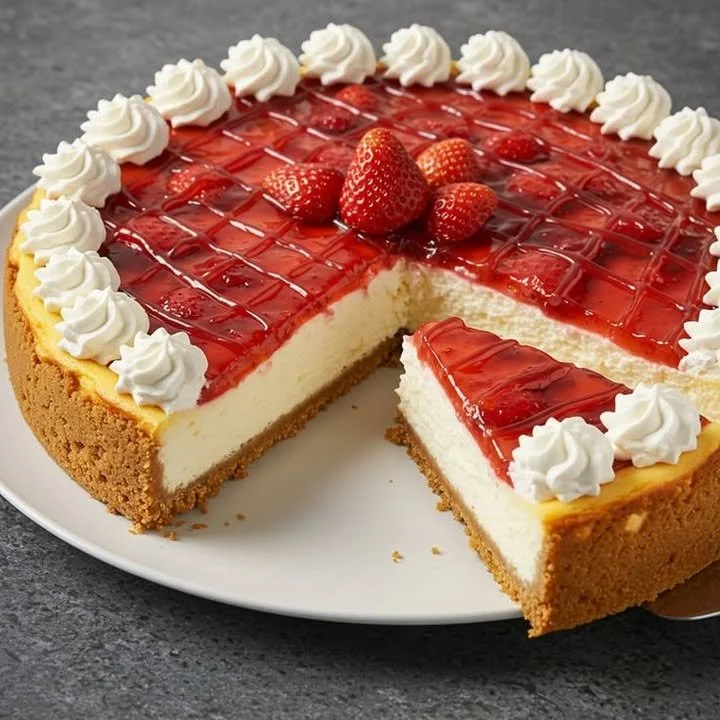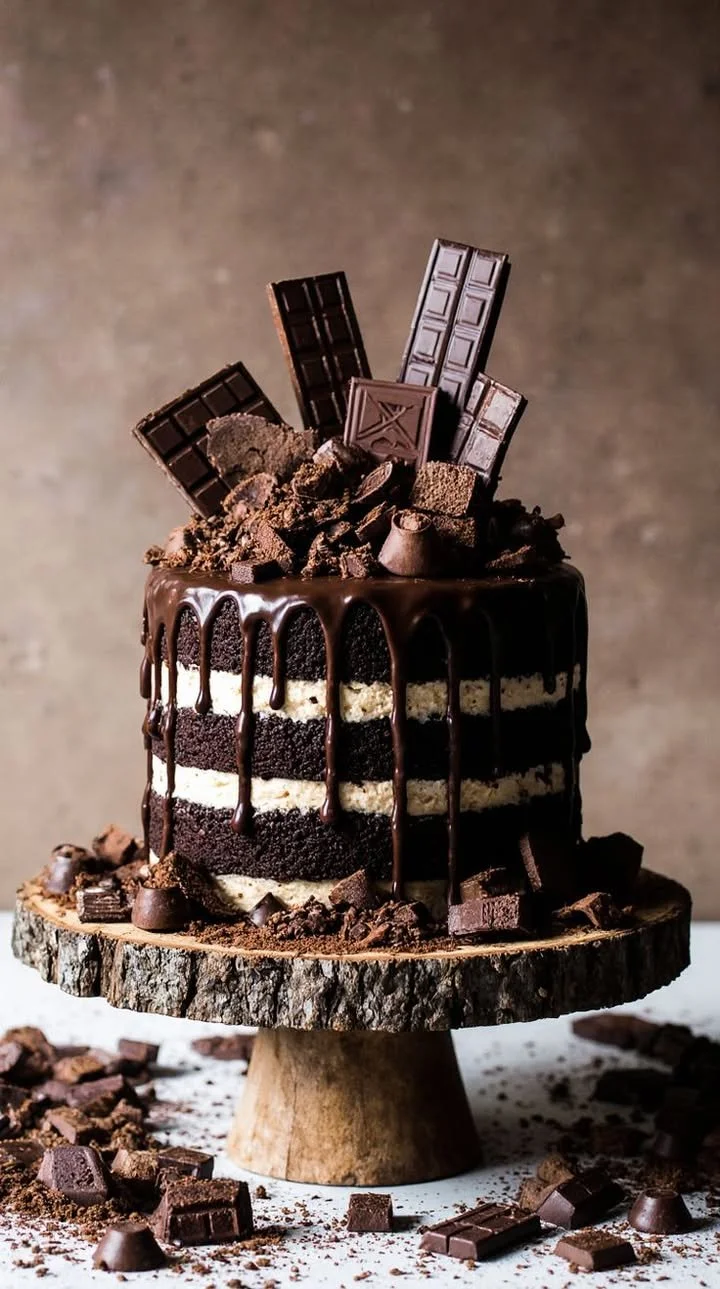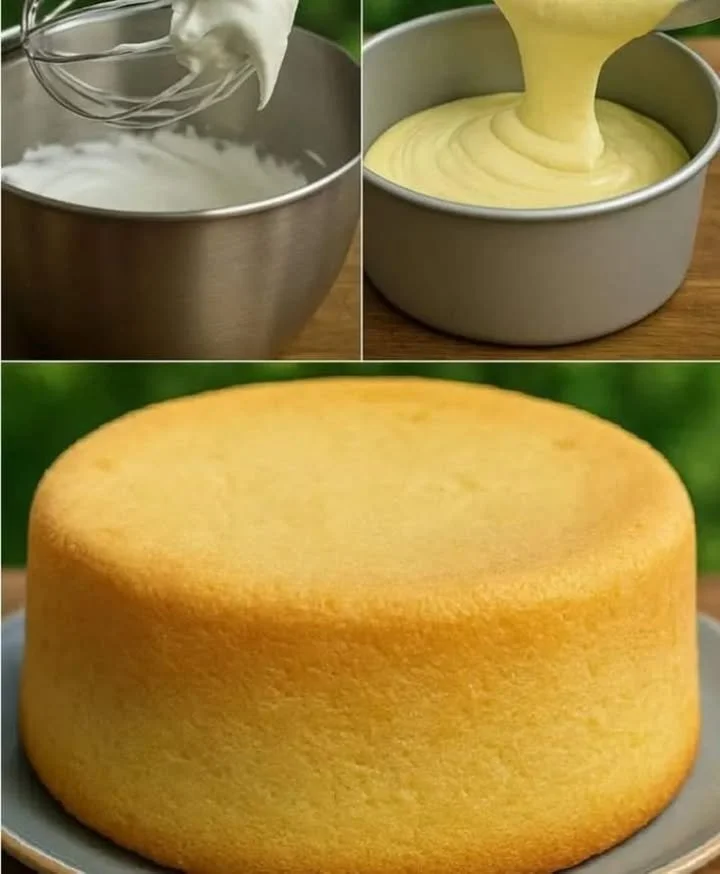Greek Baklava

Greek Baklava: The Sweetest Bite of My Childhood
There’s a certain kind of magic that wafts through my kitchen every time I bake classic Greek baklava. Just the words “Greek baklava” send me straight back to bustling family gatherings, where the air smelled like sweet honey, cinnamon, and toasted nuts, and everyone seemed to wear a sticky smile. My YiaYia (Greek for grandma) always made a tray for special holidays, and I remember hovering around the kitchen, impatient for that first warm, syrup-soaked bite. Now, I make this beloved treat not just for the memories, but for the joy of sharing a taste of Greece—one crunchy, gooey layer at a time.
Why You’ll Adore This Greek Baklava
Honestly, who can resist the charm of a golden, flaky baklava? Here are a few reasons this recipe might just steal your heart (as it has mine):
- Crunchy meets gooey heaven: Every bite of this homemade baklava delivers crisp, buttery phyllo layers and a luscious, sticky nut filling that will have you swooning.
- Incredibly aromatic: Cinnamon, vanilla, and honey mingle beautifully with toasted walnuts and almonds, filling your home with an irresistible scent.
- Surprisingly easy: I know baklava has a reputation for being tricky, but this easy dessert comes together with simple steps (and trust me, you’ll impress everyone).
- Timeless classic: Whether you’re sharing this at a family event or just treating yourself, Greek baklava feels like a little celebration each time you make it.
Ingredients You’ll Need for Greek Baklava
Ready to create some Mediterranean magic in your kitchen? Here’s what you’ll need (and a few helpful tidbits I’ve learned along the way):
- 1 package of phyllo dough: Look for it in the freezer aisle—and let it thaw in the fridge overnight for best results. (Don’t skip this step! Phyllo can be finicky if it’s too cold or warm.)
- 2 cups walnuts, finely chopped: Walnuts are the classic choice for baklava filling—toast them lightly for a more robust flavor.
- 1 cup almonds, finely chopped: Adds a sweet nuttiness and a little extra crunch.
- 1 cup melted butter: Use unsalted butter for more control over the flavor—I like to use a pastry brush to paint each sheet.
- 1 cup sugar: Sweetens that nutty mixture perfectly.
- 1 cup water: Forms the base of that dreamy syrup.
- 1 tablespoon vanilla extract: I love real vanilla here for a beautiful floral aroma.
- 1 teaspoon cinnamon: Warm, comforting, and very Greek.
- 1 cup honey: Sticky, golden perfection—choose a good quality honey for authentic flavor.
Step-by-Step Guide: Making the Perfect Greek Baklava
Making Greek baklava is incredibly satisfying—let me guide you through, just like YiaYia did for me.
- Prep the oven and pan: Preheat your oven to 350°F (175°C) and generously grease your baking dish with butter (no one likes sticky phyllo!).
- Mix up the filling: Combine walnuts, almonds, sugar, and cinnamon in a bowl. Don’t be shy; mix them well—it’s where the magic starts.
- Layer the phyllo: Start with half of your phyllo sheets, laying them one at a time in the dish and brushing each with melted butter. (Phyllo is delicate—if it tears, don’t stress. Patch it together, it’ll be hidden!)
- Add the nuts: Sprinkle your beautiful nut mixture evenly over those buttery layers.
- Top with phyllo: Use the other half of your sheets, again brushing each with more melted butter. This gives baklava that golden crunch.
- Cut it up: With a sharp knife, cut your baklava into diamonds or squares before baking. (It’s so much easier before the phyllo gets crispy.)
- Bake: Pop it in the oven and bake for 45–50 minutes, until the top is beautifully golden brown and crisp.
- Make syrup: While the baklava bakes, simmer water, sugar, honey, and vanilla in a saucepan for about 10 minutes—until it thickens and smells heavenly.
- Pour it on: As soon as your baklava comes out, pour that warm syrup evenly over the hot pastry. It will sizzle and soak right in!
- Patience is key: Let your baklava cool completely (a few hours at least) so the flavors meld and the syrup settles in. Trust me, it’s worth the wait.
My Secret Tips and Tricks for Greek Baklava Success
Throughout the years, I’ve learned a few life-changing tips for making tender, show-stopping baklava (and keeping your sanity intact):
- Keep phyllo dough covered: It dries out fast—drape a damp towel over the unused sheets while you work for perfect, manageable layers.
- Use fresh, quality nuts: The fresher, the better—stale nuts can ruin your dessert. (Try a local market if you can!)
- Don’t skimp on butter: Every phyllo sheet should be lightly brushed. Butter is the key to those crispy, flaky layers.
- Cut before baking: A sharp, non-serrated knife makes neat, classic baklava shapes and ensures the syrup soaks evenly.
- Let it rest: Waiting for the baklava to cool is tough, but it helps the syrup infuse every layer—so the dessert isn’t soggy (just perfectly juicy and crisp).
Creative Variations and Ingredient Swaps
Baklava is wonderfully flexible. Here are some ideas to suit your mood or pantry:
- Nut swaps: Make pistachio or pecan baklava for a twist—each nut brings its own personality.
- Spice it up: Experiment with cardamom, orange zest, or even a pinch of clove in the filling.
- Go vegan: Sub in vegan butter and maple syrup in place of honey for a plant-based dessert.
- Chocolate treat: Add a thin layer of melted dark chocolate between some layers for a Greek-Meets-Paris flavor adventure.
How to Serve and Store Your Greek Baklava
For the best experience, serve your Greek baklava at room temperature so the syrupy layers stay soft and the top remains crisp. I love garnishing with a sprinkle of extra chopped nuts or a drizzle of honey (it’s so inviting on a dessert platter!).
To store leftovers (if you actually have any!), keep the baklava loosely covered at room temperature for 2-3 days, or refrigerate for up to a week. Just remember, refrigeration might make baklava a little firmer but it’s still delicious. For longer storage, freeze individual pieces—just wrap well and thaw before serving for a homemade treat anytime.
FAQs: Your Top Questions About Greek Baklava Answered
1. Can I make baklava ahead of time?
Absolutely! In fact, Greek baklava actually tastes better the next day as the flavors develop. Make it a day or two in advance for fuss-free entertaining.
2. Do I need to use both walnuts and almonds?
Not at all! Feel free to use just one (traditional baklava recipes often just use walnuts), or get creative with pistachios, pecans, or hazelnuts.
3. Is there a way to cut baklava neatly without the phyllo shattering?
Yes! Use a sharp, non-serrated knife and cut before baking. Press down gently and clean the blade between cuts for pretty (and Instagram-worthy) pieces.
4. Can I use less sugar or swap the honey?
Totally! You can adjust the syrup’s sweetness to your liking—maple syrup or agave make great substitutes for honey if you want to mix things up.
5. My phyllo dough keeps tearing—help!
Phyllo can be delicate (and honestly, a little frustrating). If it tears, don’t panic—just patch and layer, no one will notice once it’s baked and syrup-soaked.
Every time I make Greek baklava, I’m reminded that the most cherished recipes are the ones we share with love. I hope this easy, aromatic, and utterly irresistible dessert brings a little sweetness to your own kitchen and maybe even sparks a tradition of your own.
Happy baking, my friend—and don’t forget to leave a piece for yourself (or at least hide one for later!).





